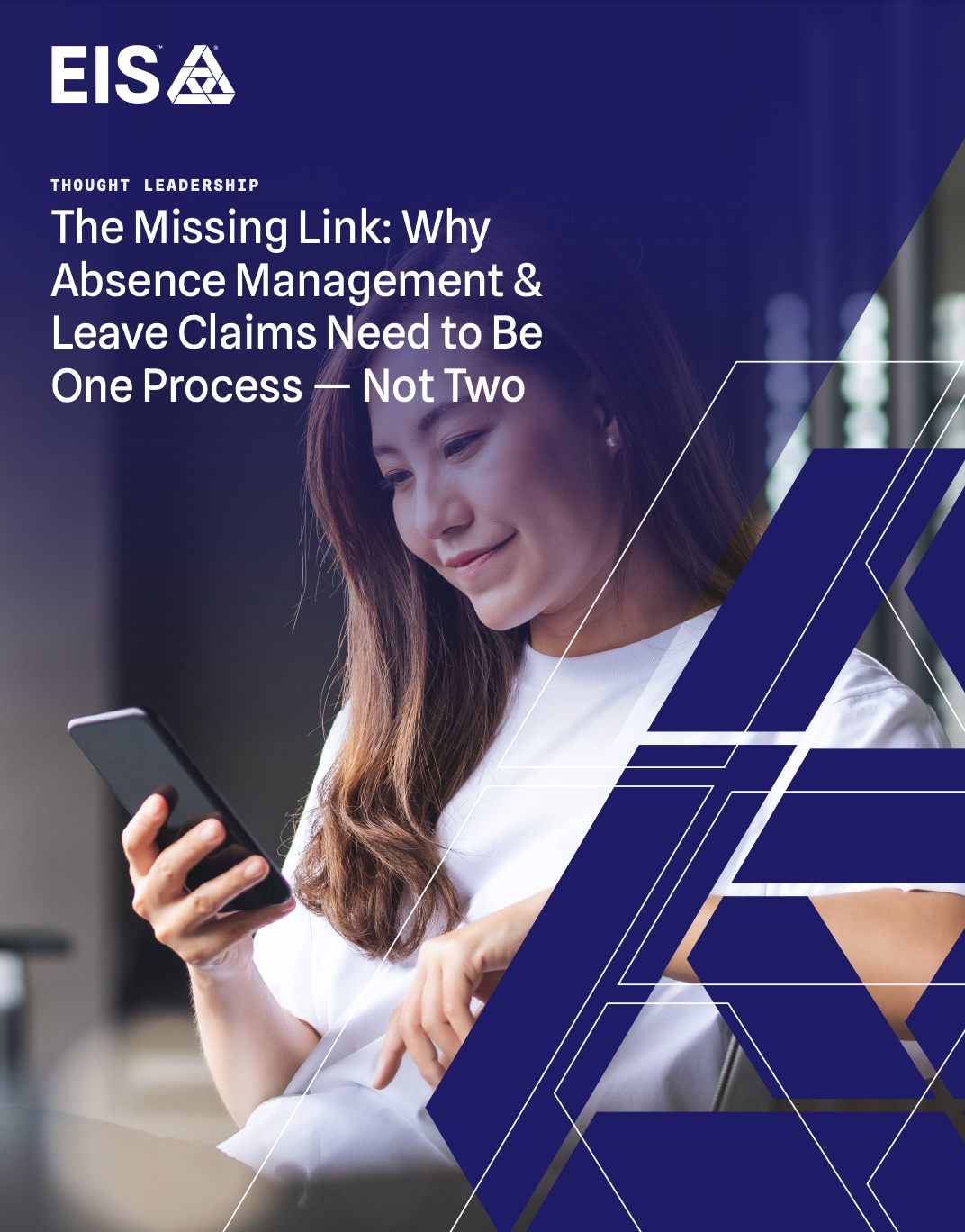This thought leadership piece from EIS calls out the outdated tech divide between absence management and leave claims — and makes a case for finally merging the two.

Let’s face it: leave management isn’t exactly the most glamorous part of insurance operations.
But it’s a quiet powerhouse that can make or break employee satisfaction, HR efficiency, and compliance success.
The AbsenceSoft 2025 State of Leave and Accommodations Report makes one thing abundantly clear: leave management isn’t just an HR headache anymore — it’s an operational battleground where insurers can either thrive or fall behind.
(Spoiler alert: If your leave management systems still run on manual processes, you’re losing. Big time.)
Here’s what the numbers say — and what insurers can do to fix the cracks in their absence operations before they become chasms.
According to the report, 57% of organizations reported an increase in leave requests over the past year. Of those, a staggering 53% saw requests climb by more than 21%.
Add to that an equally sharp increase in accommodations requests, and HR teams are busier than ever. Unfortunately, many are still relying on outdated manual processes that can barely keep up.
For insurers, this is a critical red flag. Manual processes mean:
Employees who feel unsupported during their leave process are more likely to jump ship. When they do, it costs companies 33–50% of an employee’s annual salary to replace them.
Let’s do some math:
And that’s before factoring in the hidden costs: lower morale, lost institutional knowledge, and the damage to your reputation as an employer of choice.
Federal, state, and local leave policies are getting more complex by the year, and manual systems simply can’t keep up. From parental leave to caregiver benefits, employers are adding new types of leave at a record pace, but those shiny new benefits mean nothing if they’re not applied correctly.
And as an insurer responsible for payouts to cover certain types of leave, you could face non-compliance fines, reputational damage, and a loss of trust with policyholders if you and their HR departments don’t have your house in order.
By helping HR departments make sure they’re filing leaves correctly — and that their employees have the right expectations around leave types and insurance payouts — you can save yourself from all kinds of compliance issues and customer experience headaches.
Here’s the good news: fixing leave management isn’t rocket science. It’s just a matter of upgrading your tech stack to handle the complexity.
At EIS, we’ve cracked the code with our Absence Management enhancement in partnership with AbsenceSoft that integrates seamlessly into EIS OneSuite™. Here’s how we can help:
The result? HR teams get their time (and sanity) back, employees feel valued and supported, and insurers improve retention while reducing compliance risks. Everybody wins.
The 2025 report paints a clear picture: the days of cobbling together leave policies with duct tape and hope are over. Insurers that invest in smarter, integrated solutions won’t just save time and money — they’ll also position themselves as champions of the employee experience.
Interested in improving your leave management processes? Discover how EIS can improve operational efficiency, support your employees, and give your company a competitive edge.
The post Why Inefficient Leave Management Is Costing Insurers & Employers Big Time (And What to Do About It) appeared first on EIS.